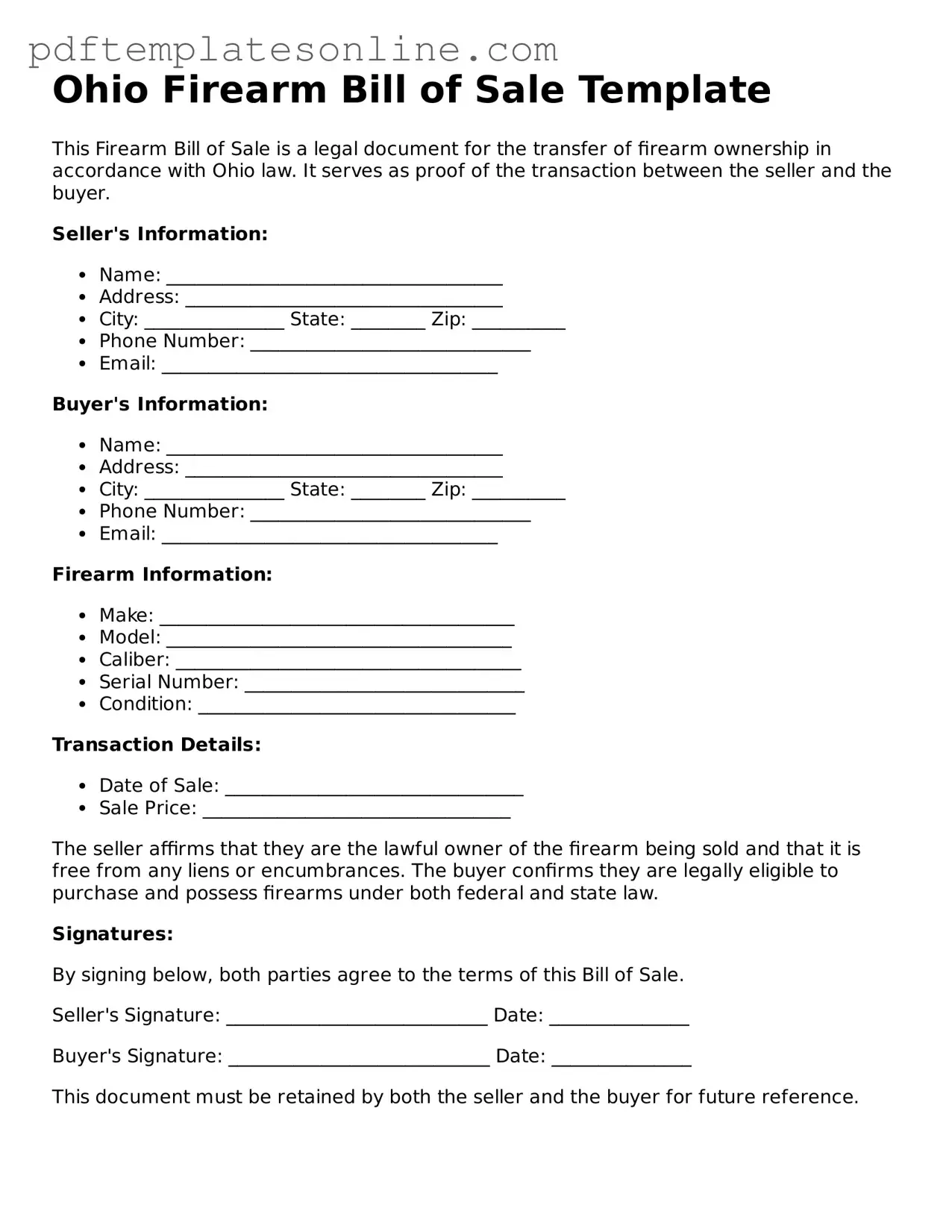Completing the Ohio Firearm Bill of Sale form requires attention to detail. One common mistake individuals make is failing to provide accurate personal information. This includes names, addresses, and contact details. Incorrect information can lead to complications in the transaction and may raise questions during any future inquiries.
Another frequent error involves neglecting to include the firearm's details. The form requires specific information about the firearm, such as make, model, caliber, and serial number. Omitting any of these details can render the bill of sale incomplete and may create issues for both the buyer and seller.
Some individuals do not sign the form. A signature is necessary to validate the transaction. Without it, the document lacks legal standing, which can lead to disputes or problems in proving ownership later on.
Additionally, people often forget to date the form. The date is crucial as it marks the official transfer of ownership. Without this, there may be confusion regarding the timeline of the sale, which can complicate any future legal matters.
Another mistake is not providing a witness signature, if required. Depending on the situation, having a witness can add an extra layer of legitimacy to the transaction. Failing to include a witness signature can weaken the validity of the bill of sale.
Lastly, individuals may overlook the importance of keeping a copy of the completed form. Both parties should retain a copy for their records. This serves as proof of the transaction and can be essential in case any issues arise later.
